- Home
- Isaac Asimov
Extraterrestrial Civilizations Page 4
Extraterrestrial Civilizations Read online
Page 4
Then, again, if a world is inhabited, it seems natural to suppose it to be inhabited by intelligent creatures—usually pictured as very much like human beings. To suppose a world to be inhabited only by unreasoning plants and animals would, again, seem to represent an intolerable waste.
Oddly enough, there was talk of life on the Moon even before the Moon was recognized as a world. This arose out of the fact that the Moon is again unique among heavenly bodies in not being evenly shining. There are darker smudges against the bright light of the Moon, smudges that are most clearly and dramatically visible at the time of the full Moon.
It was tempting for the average unsophisticated observer of the Moon to try to make a picture out of the smudges upon its face. (In fact, even the sophisticated and knowledgeable present-day observer may be tempted to do so.)
Given the natural anthropocentricity of human beings, it was almost inevitable that those smudges were pictured as representing a human being, and the notion of the “man in the Moon” arose.
Undoubtedly the original notion was prehistoric. In medieval times, however, attempts were often made to clothe age-old notions with a cloak of Biblical respectability. Therefore, the man in the Moon was thought to represent the man mentioned in Numbers 15:32–36: “And while the children of Israel were in the wilderness they found a man that gathered sticks upon the sabbath day … And the Lord said unto Moses, the man shall be surely put to death … And all the congregation brought him without the camp, and stoned him with stones, and he died …”
There is no mention of the Moon in the Biblical story, but it was easy to add the tale that when the man protested that he did not want to keep “Sunday” on Earth (although to the Israelites, Sabbath fell on the day we call Saturday), the judges said, “Then you shall keep an eternal Monday [Moon-day] in heaven.”
The man in the Moon was pictured in medieval times as bearing a thornbush, representing the sticks he had gathered; and a lantern, for he was supposed to have been gathering them at night when he hoped no one would see; and, for some reason, a dog. The man in the Moon, with these appurtenances, is part of the play within a play presented by Bottom and the other rustics in William Shakespeare’s A Midsummer Night’s Dream.
Of course, the man in the Moon was visualized as filling his entire world, since the smudges seemed smeared over the entire face of the Moon, and since the Moon appears to be a small object.
It was the Greek astronomer Hipparchus (190–120 B.C.) who first managed to work out the size of the Moon relative to the Earth by valid mathematical methods and who got essentially the right answer. The Moon is an object about ¼ the diameter of the Earth. It was no man-in-the-Moon-sized object. It was a world not only in the dark nature of the material making it up, but in its size.
What’s more, Hipparchus had worked out the distance to the Moon. It is 60 times as far from the surface of the Earth to the Moon as from the surface of the Earth to the center of the Earth.
In modern terms, the Moon is 381,000 kilometers (237,000 miles) from Earth and has a diameter of 2,470 kilometers (2,160 miles).
The Greeks already knew that the Moon was the nearest of the heavenly bodies and that the other objects were all much farther away. To be so much farther away and to be visible at all, they must all be worlds in size.
The notion of the plurality of worlds descended from the rarefied heights of philosophic speculation to the literary level with the first account we know of that reads like modern science fiction stories involving interplanetary travel.
About A.D. 165, a Greek writer named Lucian of Samosata wrote A True History, an account of a trip to the Moon. In that book, the hero is carried to the Moon by a whirlwind. He finds the Moon luminous and shining, and in the distance he can see other luminous worlds. Down below, he sees a world that is clearly his own world, the Earth.
Lucian’s universe was behind the scientific knowledge of his own time, since he had the Moon glowing and he had the heavenly bodies all close together. Lucian also assumed that air filled all of space and that “up” and “down” were the same everywhere. There was no reason as yet to think that that was not so.
Every world in Lucian’s universe was inhabited, and he assumed the presence of extraterrestrial intelligence everywhere. The king of the Moon was Endymion and he was at war with the king of the Sun, Phaethon. (These names were taken out of the Greek myths, where Endymion was a youth beloved by the Moon goddess, and Phaethon was the son of the Sun god.) The Moon beings and Sun beings were quite human in appearance, in institutions, and even in their follies, for Endymion and Phaethon were at war with each other, disputing the colonization of Jupiter.
It was not for nearly 1,300 years, however, that a major writer dealt with the Moon again. This came in 1532 in Orlando Furioso, an epic poem written by the Italian poet Ludovico Ariosto (1474–1533). In it, one of the characters travels to the Moon in the divine chariot that carried the prophet Elijah in a whirlwind to Heaven. He finds the Moon well populated by civilized people.
The notion of a plurality of worlds received still another push forward with the invention of the telescope. In 1609, the Italian scientist Galileo Galilei (1564–1642) constructed a telescope and pointed it at the Moon. For the first time in history, the Moon was seen magnified, and more clearly detailed than was possible with the unaided eye.
Galileo saw mountain ranges on the Moon, together with what looked like volcanic craters. He saw dark, smooth patches that looked like seas. Quite plainly and simply, he was seeing another world.
This stimulated the further production of fictional flights to the Moon. The first was written by Johannes Kepler (1571–1630), an astronomer of the first rank* and was published posthumously in 1633. It was entitled Somnium because the hero reached the Moon in a dream.
The book was remarkable in that it was the first to take into account the actual known facts about the Moon, which until then had been treated as in no way different from any Earthly piece of real estate. Kepler was aware that on the Moon the nights and days were each 14 Earth days long. However, he had air, water, and life on the Moon; there was nothing as yet to rule that out.
In 1638, the first science fiction story in the English language that dealt with a flight to the Moon was published. It was The Man in the Moone by an English bishop named Francis Godwin (1562–1633). It was also published posthumously.
Godwin’s book was the most influential of the early books of this nature, for it inspired a number of imitations. The hero of the book was carried to the Moon in a chariot drawn by a flock of geese (who were pictured as regularly migrating to the Moon). As usual, the Moon was populated with quite human intelligent beings.
In the same year in which Godwin’s book was published, another English bishop, John Wilkins (1614–1672), a brother-in-law of Oliver Cromwell, produced a nonfictional equivalent. In his book The Discovery of a World in the Moone, he speculated on the habitability of that body. Whereas Godwin’s hero was a Spaniard (the Spaniards having been the great explorers of the previous century), Wilkins was sure it would be an Englishman who would first reach the Moon. In a way, Wilkins proved right, for the first man on the Moon was of English descent.
Wilkins, too, assumed that air existed all the way to the Moon and indeed throughout the Universe. There was, even in 1638, no understanding that such a fact would make separate heavenly bodies impossible. If the Moon were revolving about the Earth through an infinite ocean of air, air resistance would gradually slow it and finally bring it crashing, in fragments, down on the Earth—which would similarly crash into the Sun, and so on.
WATERLESSNESS
The notion of universal air had not long to live, however. In 1643, the Italian physicist Evangelista Torricelli (1608–1647), a student of Galileo, succeeded in balancing the weight of the atmosphere against a column of mercury, inventing the barometer. It turned out, from the weight of the column of mercury that balanced the downward pressure of air, that the atmosphere would only be 8 kilometers (5 miles) high if it were of uniform density. And if the density decreased with height, as it does in fact, it could only be a little higher than that before becoming too thin to support life.
It was clear, for the first time, that air did not fill the Universe but was a purely local terrestrial phenomenon. The space between the heavenly bodies was empty, a “vacuum,” and this constituted, in a way, the discovery of outer space.
Without air, human beings could not travel to the Moon by means of water spouts, or geese-drawn chariots, or by any of the usual methods that would suffice to cross a gap of air.
The only way, in fact, that the gap between Earth and Moon could be closed was by using rockets, and this was first mentioned in 1657 by none other than the French writer and duellist Savinien de Cyrano de Bergerac (1619–1655). Cyrano, in his book Voyages to the Moon and the Sun, listed seven different ways in which a human being might travel from the Earth to the Moon, and one of them was by means of rockets. His hero actually performed the voyage, however, by one of the other (alas, worthless) methods.
As the seventeenth century progressed and as observation of the Moon continued with better and better telescopes, astronomers grew aware of certain peculiarities about our satellite.
The view of the Moon, it seemed, was always clear and unchanging. Its surface was never obscured by cloud or mist. The terminator—that is, the dividing line between the light and the dark hemispheres—was always sharp. It was never fuzzy as it would be if light were refracting through an atmosphere, thus signifying the presence on the Moon of the equivalent of an Earthly twilight.
What’s more, when the Moon’s globe approached a star, the star remained perfectly bright until the Moon’s surface reached it and then it winked out in an instant. It did not slowly dim as it would if the Moon’s atmosphere reached it before the Moon’s surface did, and if the starlight had to penetrate thickening layers of air.
In short, it became clear that the Moon was an airless world. And waterless, too, for closer examination showed that the dark “seas” that Galileo had seen were speckled with craters here and there. They were, if anything, seas of sand, but certainly not of water.
Without water, there could scarcely be life on the Moon. For the first time, people had to become aware that it was possible for a dead world to exist; one that was empty of life.
Let us not, however, hasten too quickly. Given a world without air and water, can we be sure it has no life?
Let us begin by considering life on Earth. Certainly, it shows a profound variability and versatility. There is life in the ocean deeps and on the ocean surface, in fresh water and on land, underground, in the air, even in deserts and frozen wastes.
There are even microscopic forms of life that do not use oxygen and to some of which oxygen is actually deadly. For them, airlessness would have no fears. (It is because of them that food sealed in a vacuum must be well heated first. Some pretty dangerous germs, including the one that produces botulism, get along fine in a vacuum.)
Well, then, is it so difficult to imagine some forms of life getting along without water, too?
Yes, quite difficult. No form of terrestrial life can do without water. Life developed in the sea, and the fluids within the living cells of all organisms, even those who now live in fresh water or on dry land and who would die if placed in the sea, are essentially a form of ocean water.
Even the life forms in the driest desert have not evolved into independence of water. Some might never drink, but they then get their necessary water in other ways—from the fluids of the food they eat, for instance—and carefully conserve what they get.
Some bacteria can survive desiccation and, in spore form, can live on for an indefinite period without water. The spore wall, however, protects the fluid within the bacterial cell. True desiccation, through and through, would kill it as quickly as it would kill us.
Viruses can retain the potentiality of life even when crystallized and with no water present. They cannot multiply, however, until they are within a cell and can undergo changes within the milieu of the cell fluid.
Ah, but all this refers to Earth life, which has developed in the ocean. On a waterless world, might not a fundamentally different kind of life develop that was independent of water?
Let’s reason this out as follows:
On the surface of planetary worlds (on one of which the one example of life that we know of has developed) matter can exist in any of three states: solid, liquid, or gas.
In gases, the component molecules are separated by relatively large distances and move randomly. For that reason, gas mixtures are always homogeneous, that is, all components are well mixed. Any chemical reaction that takes place in one part can equally well take place in another part and therefore spreads from one part of the system to the other with explosive rapidity. It is difficult to see how the carefully controlled and regulated reactions, which seem essential to something that is as complicated and finely balanced as living systems would appear to be, can exist in a gas.
Then, too, the molecules making up gases tend to be very simple. The complicated molecules that we can assume would be needed (if we are expected to witness the varied, versatile, and subtle changes that must surely characterize anything as varied, versatile, and subtle as life) are, under ordinary circumstances, in the solid state.
Some solids can be converted into gases by being heated sufficiently, or by being put under very low pressure. The complicated molecules characteristic of life would break up into small fragments if heated, however, and would be useless. If placed under even zero pressure, the complicated molecules will produce only insignificant quantities of vapor.
We conclude, then, that we cannot have life in the gaseous state.
In solids, the component molecules are in virtual contact, and can exist to any degree of complication. What’s more, solids can be, and usually are, heterogeneous; that is, the chemical makeup in one part can be quite different from the chemical makeup in another part. In other words, different reactions can take place in different places at different rates and under different conditions.
So far, so good, but the trouble is that the molecules in solids are more or less locked in place, and chemical reactions will take place too slowly to produce the delicate changeability we associate with life. We conclude, then, we cannot have life in the solid state.
In the liquid state, the component molecules are in virtual contact, and the possibility of heterogeneity exists, as in the solid state. However, the component molecules move about freely, and chemical reactions can proceed quickly, as in the gaseous state. What’s more, both solid and gaseous substances can dissolve in liquids to produce extraordinarily complicated systems in which there is no limit to versatility of reaction.
In short, the kind of chemistry we associate with life would seem to be possible only against a liquid background. In Earth’s case that liquid is water, and we will have something to say later in the book as to whether there is the possibility of any substitute.
A world, then, that is without water (and without any other liquid that might substitute) would seem to be surely incapable of supporting life.
Or am I still being too narrow minded?
Why can’t life, with chemical and physical properties completely different from terrestrial life, nevertheless develop and even evolve intelligence? Why can’t there be a very slow, solid life form (too slow, perhaps, to be recognized as life by us) living on the Moon or, for that matter, here on Earth? Why not a very rapid and evanescent gaseous life form, literally exploding with thought and experiencing lifetimes in split seconds, existing on the Sun, for instance.
There have been speculations in this direction. Science fiction stories have been written that postulated enormously strange life forms. The Earth itself has been considered as a living being, as have whole galaxies, and as have clouds of dust and gas in interstellar space. Life consisting of pure energy radiation has been written about and life existing outside our Universe altogether and therefore indescribable.
There is no limit to speculation in this respect, but in the absence of any evidence, they can only remain speculations. In this book, however, I will move only in those directions in which there is at least some evidence to guide me. Fragmentary and tenuous that evidence may be, and the conclusions shaky enough—but to step across the line into the region of no evidence at all I will not do.
Therefore, until evidence to the contrary is forthcoming, I must conclude that, on the basis of what we know of life (admittedly limited), a world without liquid is a world without life. Insofar then as the Moon seems to be a world without liquid, the Moon would seem to be a world without life.
We might be more cautious and say that a world without liquid is a world without life-as-we-know-it. It would be tiresome, however, to repeat the phrase constantly, and I will say it only now and then to make sure you don’t forget that that is what I mean. In between, please take it for granted that in this book I am speaking of life-as-we-know-it, whenever I speak of life. Please remember also that there is not one scrap of evidence, however faint or indirect, that speaks for the existence of life-not-as-we-know-it.
Even now, we may be rushing to a conclusion too rapidly. The astronomers at their early telescopes could see clearly that there was no water on the Moon in the sense that there were no seas, great lakes, or mighty rivers. As telescopes continued to improve, no sign of “free water” on the surface ever showed up.
Yet might there not be water present in minor quantities, in small pools or bogs in the shadow of crater walls, in underground rivers and seepages, or even just in loose chemical combination with the molecules making up the Moon’s solid surface?
Such water would surely not be observable through a telescope, and yet it might be enough to support life.
Yes, it might—but if life had its origin through chemical reactions taking place randomly (and we will discuss this in a later chapter), then the larger the volume in which those random processes take place, the greater the chance that they would finally succeed in producing something as complicated as life. Furthermore, the larger the volume in which the process took place, the more room there would be for the kind of prodigal outpouring of death and replacement that serves as the power drive for the random process of evolution.

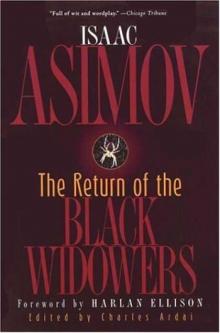 The Return of the Black Widowers
The Return of the Black Widowers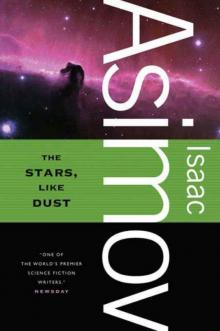 The Stars, Like Dust
The Stars, Like Dust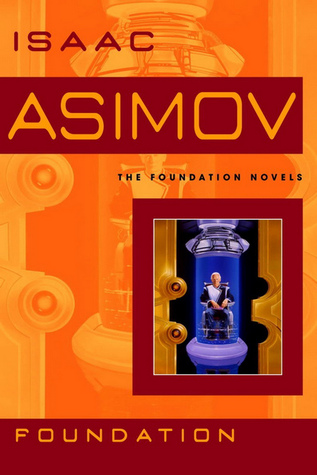 Foundation
Foundation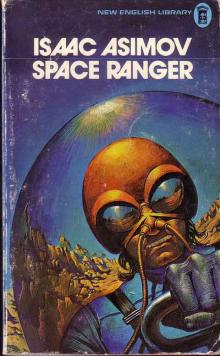 David Starr Space Ranger
David Starr Space Ranger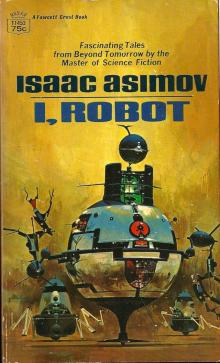 I, Robot
I, Robot Puzzles of the Black Widowers
Puzzles of the Black Widowers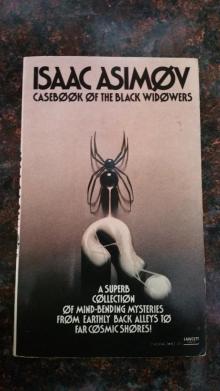 Casebook of the Black Widowers
Casebook of the Black Widowers The Ugly Little Boy
The Ugly Little Boy Azazel
Azazel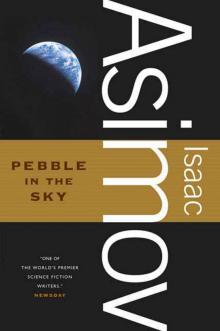 Pebble in the Sky
Pebble in the Sky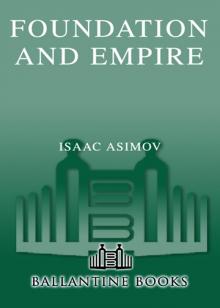 Foundation and Empire
Foundation and Empire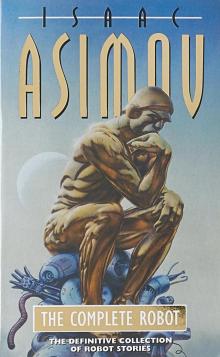 The Complete Robot
The Complete Robot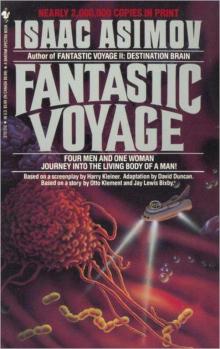 Fantastic Voyage
Fantastic Voyage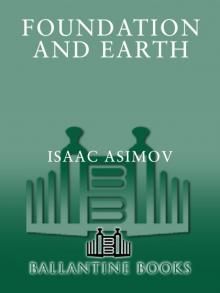 Foundation and Earth
Foundation and Earth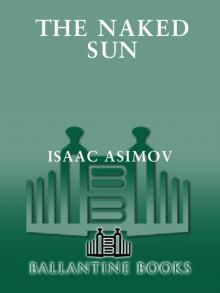 The Naked Sun
The Naked Sun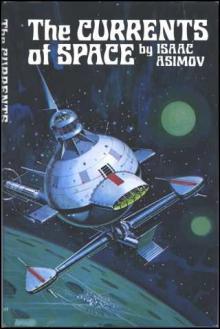 The Currents of Space
The Currents of Space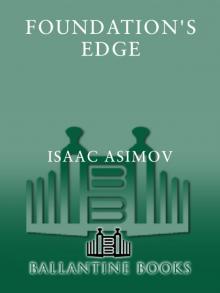 Foundation's Edge
Foundation's Edge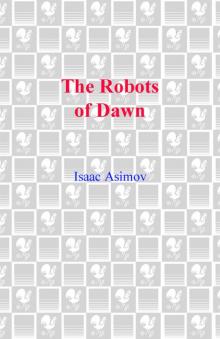 The Robots of Dawn
The Robots of Dawn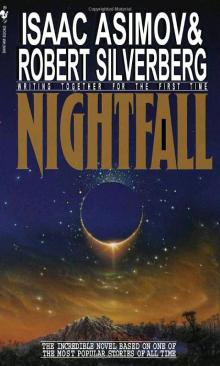 Nightfall
Nightfall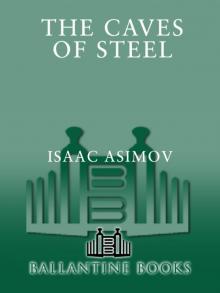 The Caves of Steel
The Caves of Steel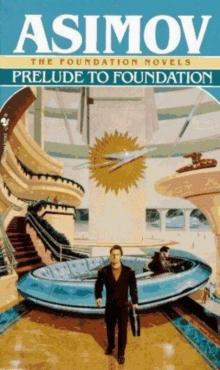 Prelude to Foundation
Prelude to Foundation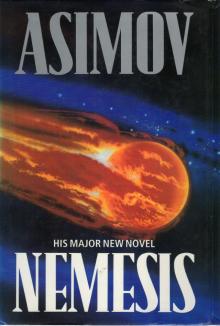 Nemesis
Nemesis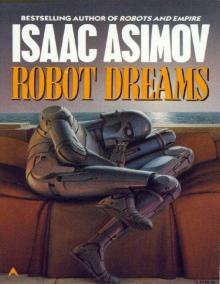 Robot Dreams
Robot Dreams More Tales of the Black Widowers
More Tales of the Black Widowers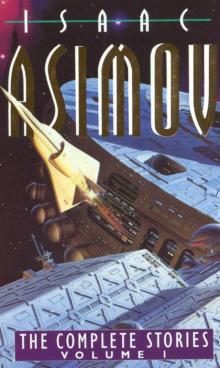 The Complete Stories
The Complete Stories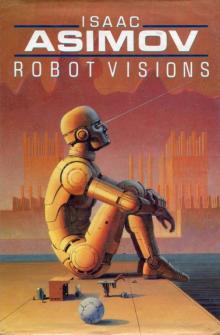 Robot Visions
Robot Visions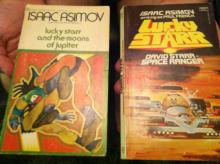 Lucky Starr And The Moons of Jupiter
Lucky Starr And The Moons of Jupiter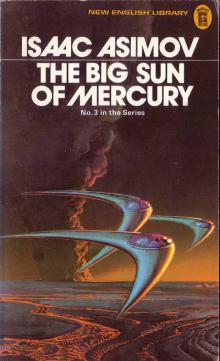 Lucky Starr and the Big Sun of Mercury
Lucky Starr and the Big Sun of Mercury The End of Eternity
The End of Eternity The Bicentennial Man and Other Stories
The Bicentennial Man and Other Stories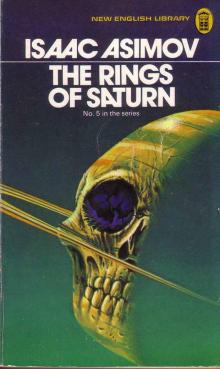 Lucky Starr And The Rings Of Saturn
Lucky Starr And The Rings Of Saturn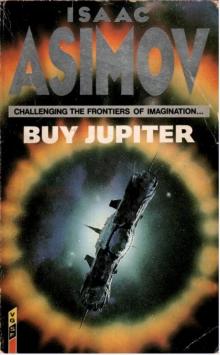 Buy Jupiter and Other Stories
Buy Jupiter and Other Stories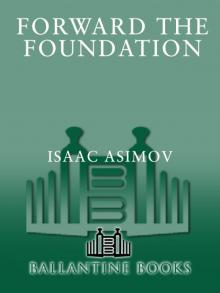 Forward the Foundation
Forward the Foundation Lucky Starr and the Oceans of Venus
Lucky Starr and the Oceans of Venus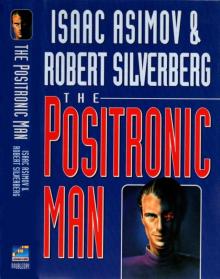 The Positronic Man
The Positronic Man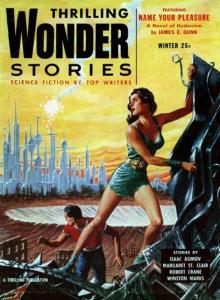 The Portable Star
The Portable Star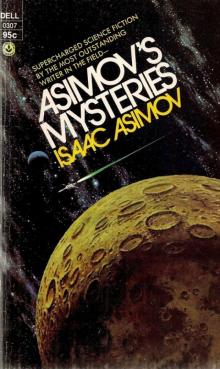 Asimovs Mysteries
Asimovs Mysteries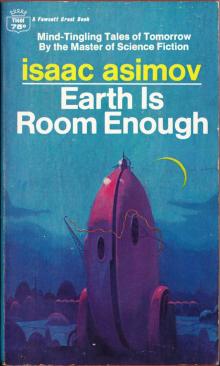 Earth Is Room Enough
Earth Is Room Enough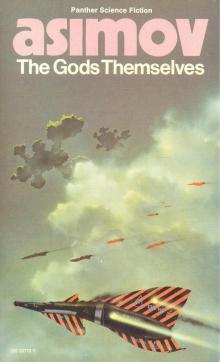 The Gods Themselves
The Gods Themselves Youth
Youth The Early Asimov Volume 3
The Early Asimov Volume 3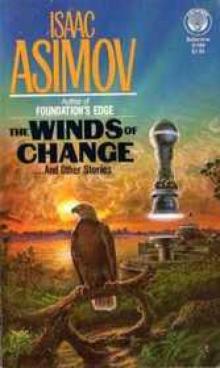 The Winds of Change and Other Stories
The Winds of Change and Other Stories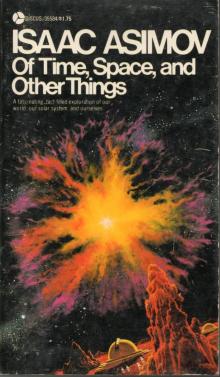 Of Time, Space, and Other Things
Of Time, Space, and Other Things Nine Tomorrows
Nine Tomorrows Time Warps
Time Warps Robots and Empire
Robots and Empire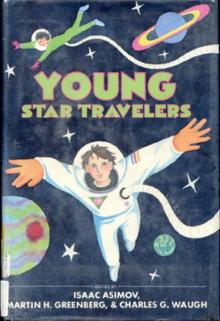 Young Star Travelers
Young Star Travelers Fantastic Voyage II: Destination Brain
Fantastic Voyage II: Destination Brain Second Foundation
Second Foundation The Rest of the Robots
The Rest of the Robots NINE TOMORROWS Tales of the Near Future
NINE TOMORROWS Tales of the Near Future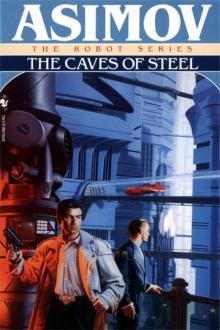 Daneel Olivaw 1 - The Caves of Steel
Daneel Olivaw 1 - The Caves of Steel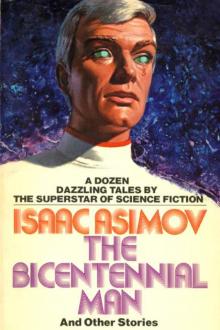 THE BICENTENNIAL MAN
THE BICENTENNIAL MAN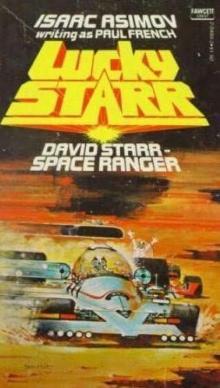 David Starr Space Ranger (lucky starr)
David Starr Space Ranger (lucky starr)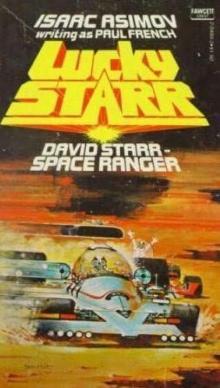 David Starr Space Ranger (ls)
David Starr Space Ranger (ls)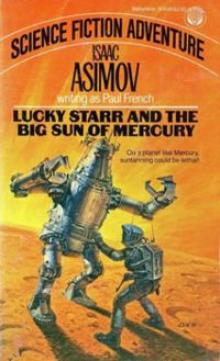 Lucky Starr And The Big Sun Of Mercury ls-4
Lucky Starr And The Big Sun Of Mercury ls-4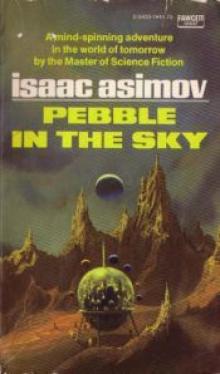 Pebble In The Sky te-1
Pebble In The Sky te-1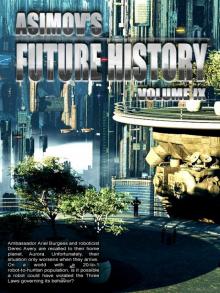 Asimov’s Future History Volume 9
Asimov’s Future History Volume 9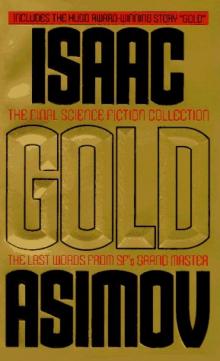 Gold: The Final Science Fiction Collection
Gold: The Final Science Fiction Collection Foundation and Earth f-7
Foundation and Earth f-7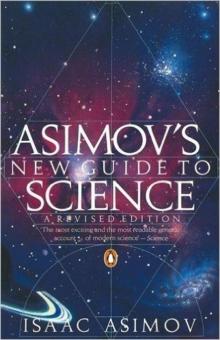 Asimov's New Guide to Science
Asimov's New Guide to Science STORM OVER WARLOCK
STORM OVER WARLOCK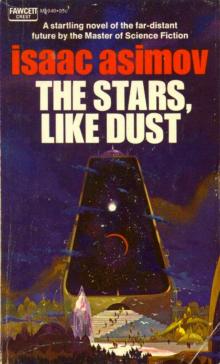 Stars, Like Dust
Stars, Like Dust Norby The Mixed-Up Robot
Norby The Mixed-Up Robot Found!
Found!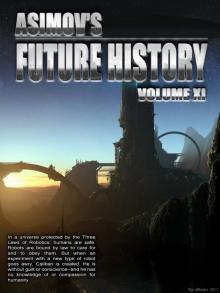 Asimov’s Future History Volume 11
Asimov’s Future History Volume 11 Second Foundation f-5
Second Foundation f-5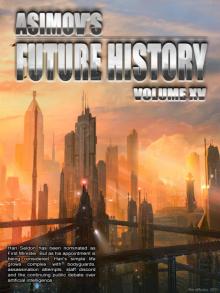 Asimov’s Future History Volume 15
Asimov’s Future History Volume 15 The Early Asimov. Volume 1
The Early Asimov. Volume 1 Secound Foundation
Secound Foundation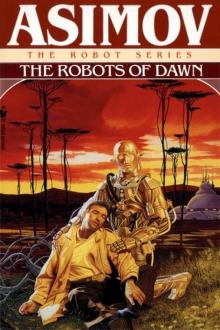 Daneel Olivaw 3 - The Robots of Dawn
Daneel Olivaw 3 - The Robots of Dawn Asimov’s Future History Volume 6
Asimov’s Future History Volume 6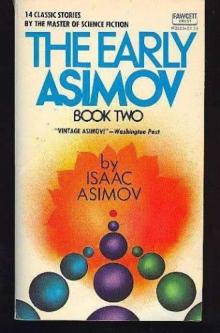 The Early Asimov. Volume 2
The Early Asimov. Volume 2 Lucky Starr And The Rings Of Saturn ls-6
Lucky Starr And The Rings Of Saturn ls-6 100 Malicious Little Mysteries
100 Malicious Little Mysteries Forward the Foundation f-2
Forward the Foundation f-2 I.Asimov: A Memoir
I.Asimov: A Memoir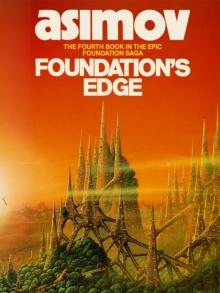 Foundation's Edge f-6
Foundation's Edge f-6 Lucky Starr and the Pirates of the Asteroids ls-2
Lucky Starr and the Pirates of the Asteroids ls-2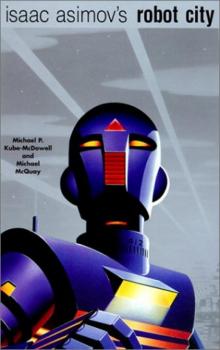 Robot City 1 & 2
Robot City 1 & 2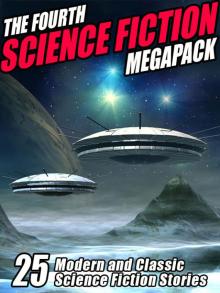 The Fourth Science Fiction Megapack
The Fourth Science Fiction Megapack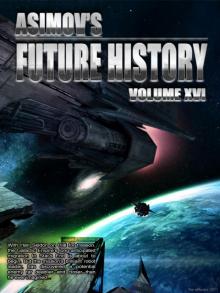 Asimov’s Future History Volume 16
Asimov’s Future History Volume 16 The Dim Rumble
The Dim Rumble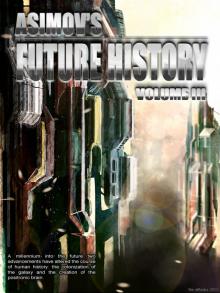 Asimov's Future History Volume 3
Asimov's Future History Volume 3 The Currents Of Space te-3
The Currents Of Space te-3 Asimov’s Guide To Shakespear. Volume 1
Asimov’s Guide To Shakespear. Volume 1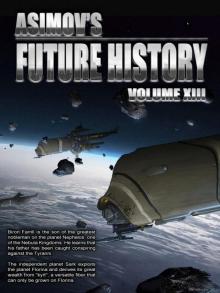 Asimov’s Future History Volume 13
Asimov’s Future History Volume 13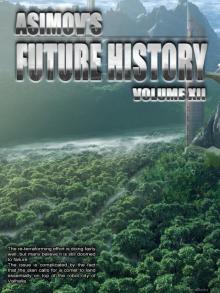 Asimov’s Future History Volume 12
Asimov’s Future History Volume 12 The Secret Sense
The Secret Sense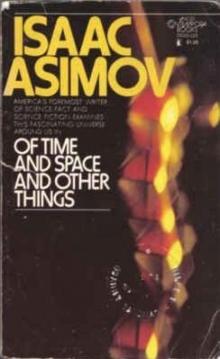 Of Time and Space and Other Things
Of Time and Space and Other Things Norby tnc-2
Norby tnc-2 Norby The Mixed-Up Robot tnc-1
Norby The Mixed-Up Robot tnc-1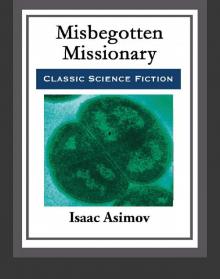 Misbegotten Missionary
Misbegotten Missionary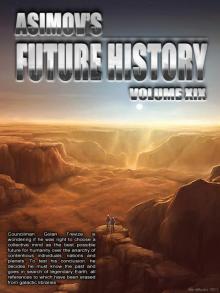 Asimov’s Future History Volume 19
Asimov’s Future History Volume 19 Fantastic Voyage II: Destination Brain fv-2
Fantastic Voyage II: Destination Brain fv-2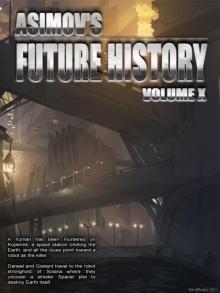 Asimov’s Future History Volume 10
Asimov’s Future History Volume 10 Asimov's Future History Volume 2
Asimov's Future History Volume 2 Feeling of Power
Feeling of Power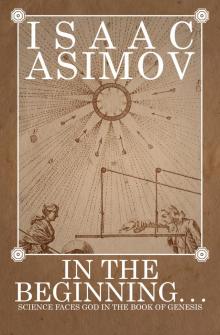 In the Beginning
In the Beginning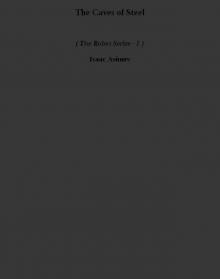 The Caves of Steel trs-1
The Caves of Steel trs-1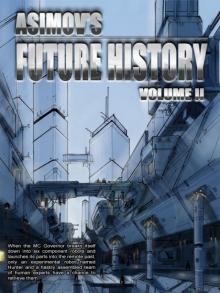 Asimov's Future History Vol 2
Asimov's Future History Vol 2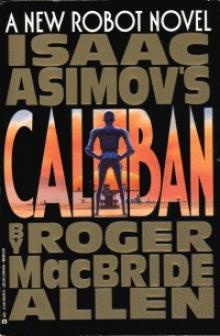 Caliban c-1
Caliban c-1 The Gentle Vultures
The Gentle Vultures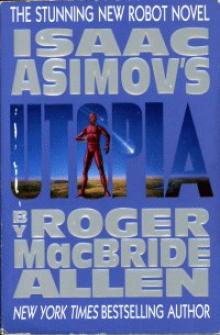 Utopia c-3
Utopia c-3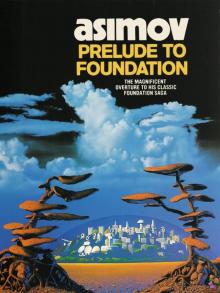 Prelude to Foundation f-1
Prelude to Foundation f-1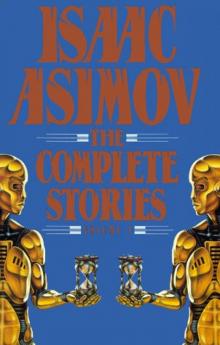 Short Stories Vol.1
Short Stories Vol.1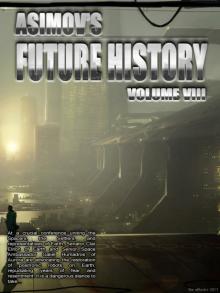 Asimov’s Future History Volume 8
Asimov’s Future History Volume 8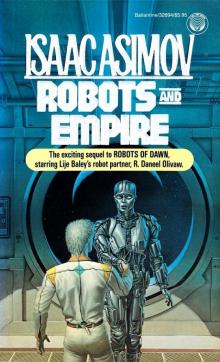 Daneel Olivaw 4 - Robots and Empire
Daneel Olivaw 4 - Robots and Empire Lucky Starr The And The Moons of Jupiter ls-5
Lucky Starr The And The Moons of Jupiter ls-5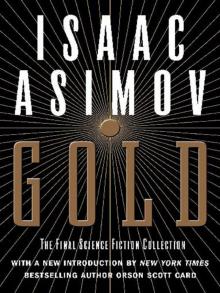 Gold
Gold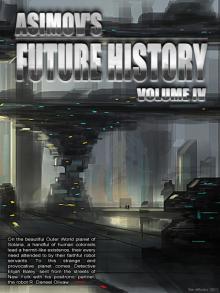 Asimov’s Future History Volume 4
Asimov’s Future History Volume 4 Foundation and Empire f-4
Foundation and Empire f-4 Potential
Potential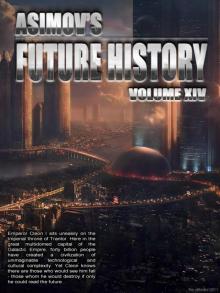 Asimov’s Future History Volume 14
Asimov’s Future History Volume 14 Asimov’s Future History Volume 7
Asimov’s Future History Volume 7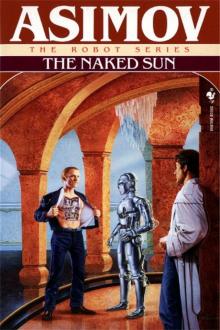 Daneel Olivaw 2 - The Naked Sun
Daneel Olivaw 2 - The Naked Sun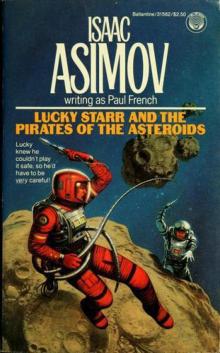 Lucky Starr and the Pirates of the Asteroids
Lucky Starr and the Pirates of the Asteroids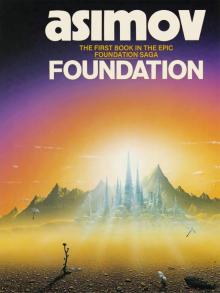 Foundation f-3
Foundation f-3 All the Troubles of the World
All the Troubles of the World Cleon the Emperor
Cleon the Emperor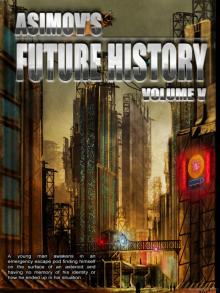 Asimov's Future History Volume 5
Asimov's Future History Volume 5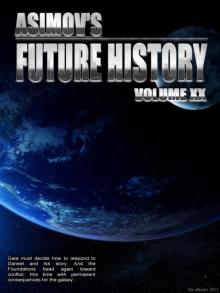 Asimov’s Future History Volume 20
Asimov’s Future History Volume 20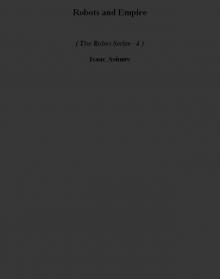 Robots and Empire trs-4
Robots and Empire trs-4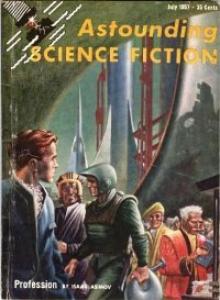 Profession
Profession It's Been a Good Life
It's Been a Good Life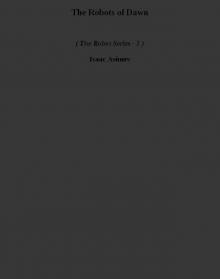 The Robots of Dawn trs-3
The Robots of Dawn trs-3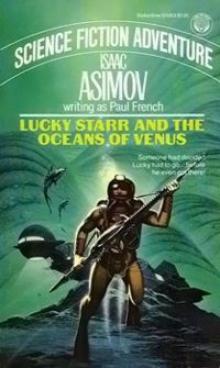 Lucky Starr And The Oceanf Of Venus ls-3
Lucky Starr And The Oceanf Of Venus ls-3 The Naked Sun trs-2
The Naked Sun trs-2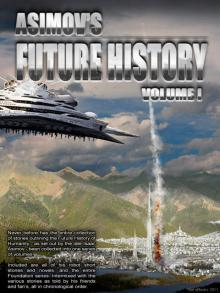 Asimov's Future History Volume 1
Asimov's Future History Volume 1